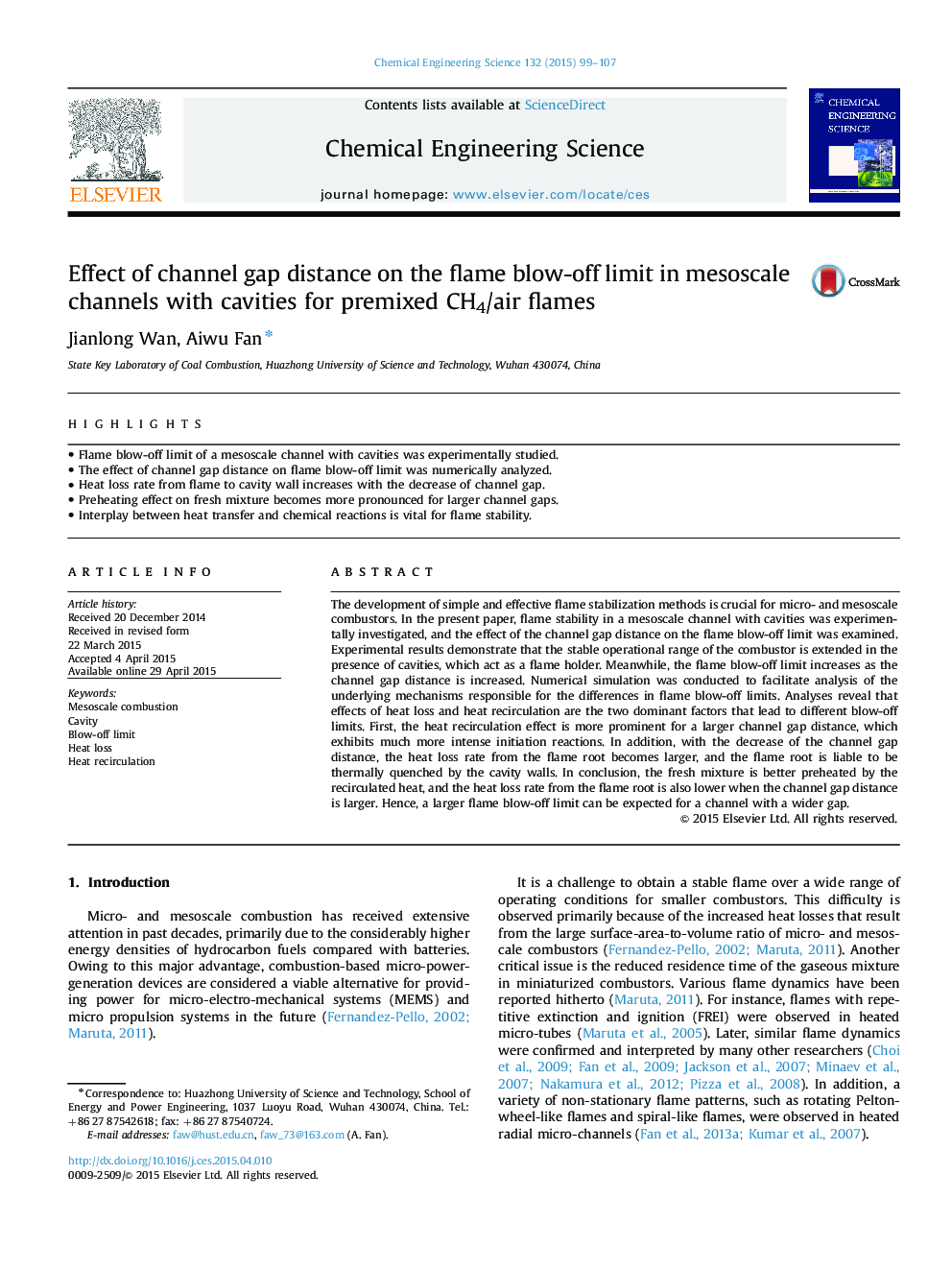| کد مقاله | کد نشریه | سال انتشار | مقاله انگلیسی | نسخه تمام متن |
|---|---|---|---|---|
| 154667 | 456848 | 2015 | 9 صفحه PDF | دانلود رایگان |

• Flame blow-off limit of a mesoscale channel with cavities was experimentally studied.
• The effect of channel gap distance on flame blow-off limit was numerically analyzed.
• Heat loss rate from flame to cavity wall increases with the decrease of channel gap.
• Preheating effect on fresh mixture becomes more pronounced for larger channel gaps.
• Interplay between heat transfer and chemical reactions is vital for flame stability.
The development of simple and effective flame stabilization methods is crucial for micro- and mesoscale combustors. In the present paper, flame stability in a mesoscale channel with cavities was experimentally investigated, and the effect of the channel gap distance on the flame blow-off limit was examined. Experimental results demonstrate that the stable operational range of the combustor is extended in the presence of cavities, which act as a flame holder. Meanwhile, the flame blow-off limit increases as the channel gap distance is increased. Numerical simulation was conducted to facilitate analysis of the underlying mechanisms responsible for the differences in flame blow-off limits. Analyses reveal that effects of heat loss and heat recirculation are the two dominant factors that lead to different blow-off limits. First, the heat recirculation effect is more prominent for a larger channel gap distance, which exhibits much more intense initiation reactions. In addition, with the decrease of the channel gap distance, the heat loss rate from the flame root becomes larger, and the flame root is liable to be thermally quenched by the cavity walls. In conclusion, the fresh mixture is better preheated by the recirculated heat, and the heat loss rate from the flame root is also lower when the channel gap distance is larger. Hence, a larger flame blow-off limit can be expected for a channel with a wider gap.
Journal: Chemical Engineering Science - Volume 132, 18 August 2015, Pages 99–107